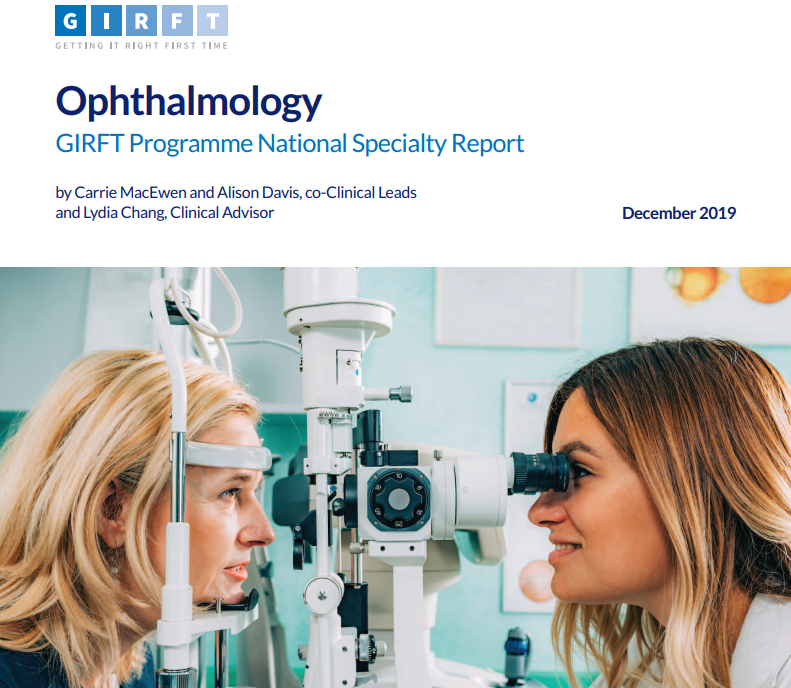The latest report from the Getting It Right First Time (GIRFT) programme highlights how eye care services could be rethought to make better use of available resources.
Demand for Ophthalmology services has risen significantly – with referrals from primary care up 12% since 2013/14 – and repeated studies suggests it will continue to rise, particularly in light of an ageing population. The report was written in response to the impact of this on ophthalmology departments, that are often struggling to keep pace.
The approach of the report is to draw on best practice to identify ways to optimise provision and increase capacity, reducing pressure on consultants and empowering the wider team while offering patients a more flexible service and better experience.
In the foreword, Mike Burdon, President of Royal College of Ophthalmology welcomes the publication, ‘It reflects a huge commitment by the GIRFT team to analyse the ophthalmology services being delivered at the 120 trusts in England, and to identify innovative models of eye care which, if adopted nationally, would greatly impact on our ability to keep pace with rising demand and ensure patients benefit from high quality care.
The principle value of this GIRFT report is that it provides an in-depth assessment of what is good practice and what could be improved. The clinicians and managers working in ophthalmology services, and those that commission these services, have a duty to reflect on its recommendations. It is vital that we adopt efficient models of care, and the reporting and auditing of that care, to ensure we are able to deliver the quality of services that all patients have a right to expect.’
More information, including the full report, can be found on the GIRFT website.

If you are interested in finding out more:
Read the full GIRFT Report here.
The CCEHC’s Systems and Assurance Framework for Eye Health (SAFE) aims to help commissioners develop a more strategic and consistent approach to service planning.
Read BIOS’s position on Advanced and Extended roles here.
More information about the advanced and extended roles taken on by orthoptists is available on our CAG pages.